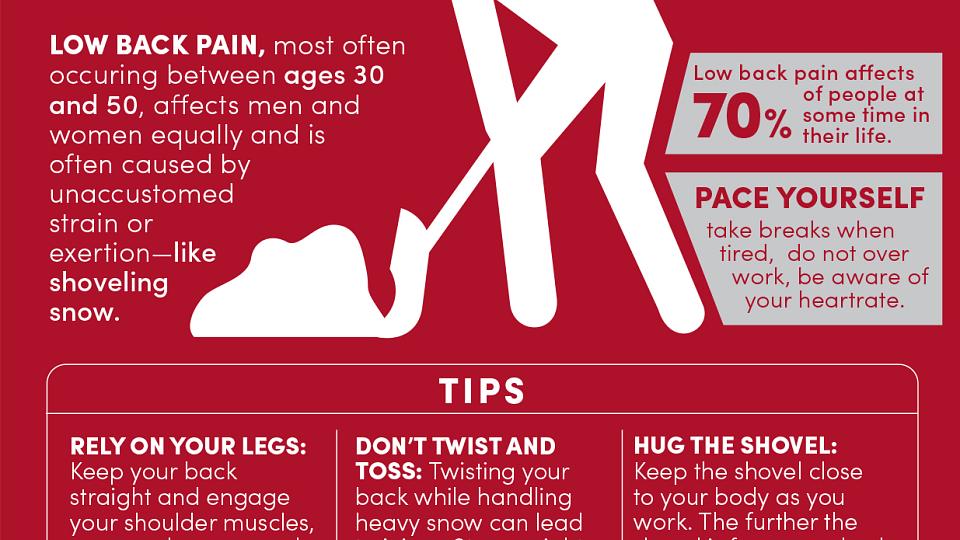
Back/Spinal Fusion

Back/Spinal Fusion
What Is Spinal Fusion?

Spinal fusion is a surgical procedure doctors can use to treat many different problems in your back or neck. The surgery joins two or more of your vertebrae together, which can:
- stabilize and align your spine;
- prevent movements between vertebrae that are not normal;
- stop painful stretching or compression of the surrounding nerves, ligaments, and muscles; and
- restore normal space between your vertebrae.
Conditions that Spinal Fusion Treats
Your doctor may recommend spinal fusion if you have:
- degenerative disc disease,
- herniated discs in the neck and back,
- scoliosis,
- spinal pain,
- spondylosis,
- spinal tumor,
- broken/fractured vertebrae, or
- instability between two or more vertebrae.
Find a Back/Spinal Fusion Doctor
Erica F. Bisson, MD, MPH
Neuro Spine SurgeryDavid M. Civitarese, DO
Spine EvaluationBrent L. Clyde, MD
Neuro Spine Surgery, Spine EvaluationVictoria I. Heagy, NP
Orthopaedic Spine SurgeryAmber Ivie, PT
Orthopaedic Spine Surgery


When We Recommend Spinal Fusion Surgery
Specialists may recommend spinal fusion for your back or neck if:
- Nonsurgical treatments—such as physical therapy, heat, medication, steroid injections, or cortisone injections—have not been effective.
- Your back or neck pain is ongoing and keeps you from being able to work or enjoy daily activities.
- We can determine the cause of your symptoms and a spinal fusion is appropriate for your condition and overall health.
How to Prepare for Spinal Fusion Surgery
There are several things you can do to help your spinal fusion surgery and recovery be as smooth as possible. Advice may vary by doctor. However, these are some of the most common ways to prepare.
1. Take care of your overall health. To make sure you are in optimal medical condition for surgery, your doctor may suggest that you:
- have a physical exam, blood work, and other tests;
- lose weight if you are overweight or obese; and
- maintain an ideal hemoglobin A1C level, if you have diabetes.
2. Quit smoking and tobacco use. If you smoke or use tobacco products, it could put you at a greater risk of complications. It’s important to tell your doctor so you can make a plan to quit, ideally several months before your surgery.
3. Stop taking certain medications and supplements (as directed by your doctor). Your doctor may ask you to stop taking certain medications and supplements before surgery. These may include narcotic pain medication, anti-inflammatories, blood thinners, insulin, and more. You may need to stop some for several days and others just on the day of surgery.
4. Stay active. Keep moving as much as possible before surgery. Choose activities that your body can tolerate—walking, swimming, or riding a stationary bike, for example. Regular physical activity can help you:
- maintain a healthier weight that helps you recover faster, and
- reduce your risk of a blood clot or circulation issues.
5. Get support from others. Make sure you have someone available to:
- be supportive of your mental well-being before and after surgery;
- drive you home from the hospital; and
- help you after returning home—to move around, prepare food, and take care of other household needs—especially during the first few days.
6. Follow any other recommendations from your doctor. Your doctor may have other specific instructions for you. If so, it’s important to review and follow them thoroughly.


Spinal Fusion Procedure
We can perform spinal fusion using different approaches. This can affect how long you’re in surgery; however, spinal fusion typically takes a few hours.
Before your procedure begins, you will receive anesthesia. It will keep you asleep during the procedure and keep you from feeling anything.
Your surgeon can walk you through the details for your specific surgery. In general, you can expect that your surgeon will:
- Make an incision to access your spine.
- If needed, remove the disc that's between the vertebrae being fused.
- Add a bone graft (bone or bone-like material) to the space between your vertebrae, which will fuse the vertebrae together over several months.
- Add metal screws, plates, rods, and/or a cage to hold the area still while your bone graft heals, if recommended.
- Close your incision.
Types of Spinal Fusion Surgery
There are many names for spinal fusion surgery, which are based on different techniques and approaches. What’s best for you may depend on your condition, the areas that need treatment, and other factors.
Common Spinal Fusion Surgeries
- Anterior Cervical Discectomy and Fusion (ACDF)
- Anterior Lumbar Interbody Fusion (ALIF)
- Lateral Lumbar Interbody Fusion (LLIF)
- Posterior Lumbar Interbody Fusion (PLIF)
- Scoliosis Fusion Surgery
- Transforaminal Lumbar Interbody Fusion (TLIF)
Approaches to Spinal Fusion
- Anterior approach: through an incision in the front of your neck or lower abdomen
- Cervical fusion: joins vertebrae in your neck; also referred to as a neck fusion
- Interbody: fusion between two or more vertebrae (vertebral bodies)
- Lateral approach: through an incision on your side
- Lumbar fusion: joins vertebrae in the low back; also referred to as a lower back fusion
- Posterior approach: through an incision in the back of your neck or back
- Transforaminal: enlarges the foramina openings (where nerve roots exit the spine) for decompression and other purposes
Minimally Invasive Spinal Fusion Vs. Traditional (Open) Surgery
We can perform spinal fusion as open surgery or as minimally invasive surgery in many cases. Each approach has advantages and risks, which you should discuss with your spine specialist when considering surgery.
Spinal Fusion Recovery
Hospital Stay
The amount of time you spend in the hospital after surgery depends on the extent of your spinal fusion and your physical condition. It ranges from two to five days in most cases. Before leaving the hospital, medical staff will provide you with instructions on caring for your spine after surgery.
Moving and Healing after Spinal Fusion Surgery
The recovery process can be different for everyone. However, your doctor may offer recommendations like these for the first few weeks to make your recovery as smooth as possible:
- Get up to walk for a few minutes every few hours, and gradually increase your walking time and other low-impact activity (with limitations).
- Avoid twisting, bending, lifting more than 5 pounds, and sitting for long periods of time.
- Wear a back or neck brace to provide support during healing.
- Take medication to reduce pain.
- Make follow-up appointments to remove stitches and monitor your progress.
- Don’t drive until after your follow-up appointment.
- Start physical therapy or occupational therapy to help you regain strength and mobility.
Spinal Fusion Recovery Time
The recovery for spinal fusion usually takes longer than other types of spinal surgery. That's because with spinal fusion, it can take several weeks or months for the bones to fuse together. Your doctor can give you an idea of recovery time based on your unique situation.
Success Rate, Complications, and Potential Risks
While spinal fusion can be effective in addressing many back and neck issues, there is no guarantee that surgery will heal your symptoms. Success depends on several factors, so it is best to speak with a spine specialist about your specific situation.
All surgery comes with risks, and your overall health can significantly impact your surgery and healing. You should discuss potential complications and risks with your doctor.
Most risks for spinal fusion surgery are rare but can include:
- infection,
- bleeding,
- blood clots,
- general anesthesia risks,
- nerve damage,
- a decrease in your spine’s flexibility, and
- vertebrae not permanently fusing together.
Additionally, there’s a chance that:
- Spinal fusion won’t relieve your symptoms, or that they may return or get worse in the future.
- Areas above or below the fused area may degenerate at a faster rate. If this happens, you may need additional surgery.
Related Procedures
Procedures that May Be Performed along with a Spinal Fusion
- Microdiscectomy: removes all or part of a herniated disc
- Laminotomy or laminectomy: removes some of your lamina bone to enlarge your spinal canal and/or provide access to a disc for some other procedures
- Foraminotomy or Foraminectomy: removes bone and tissue on the side of your vertebrae to increase space for nerves
Surgical Alternatives to Spinal Fusion
Artificial disc replacement surgery may be an alternative to spinal fusion in some situations. Your spine specialist can help you determine if it's an option for you. During this surgery, we remove the disc that is causing problems in your back or neck, and replace it with an artificial disc.
An artificial disc is designed to maintain more normal motion between your vertebrae. It may also help restore height between the vertebrae and room for nerve roots.
The procedure can be done as a:
- cervical disc replacement, or
- lumbar disc replacement.
Next Steps
Before we even consider recommending spinal fusion surgery, we do a full evaluation of your unique situation. If you have back or neck pain, get in touch with us to schedule an evaluation.
We bring together specialists from both the Clinical Neurosciences Center and the University Orthopaedics Center so you can have the best possible outcome. Our specialists are board-certified, fellowship-trained, up to date on the latest medical research, and will work with you to review your treatment options and develop a personalized plan.


